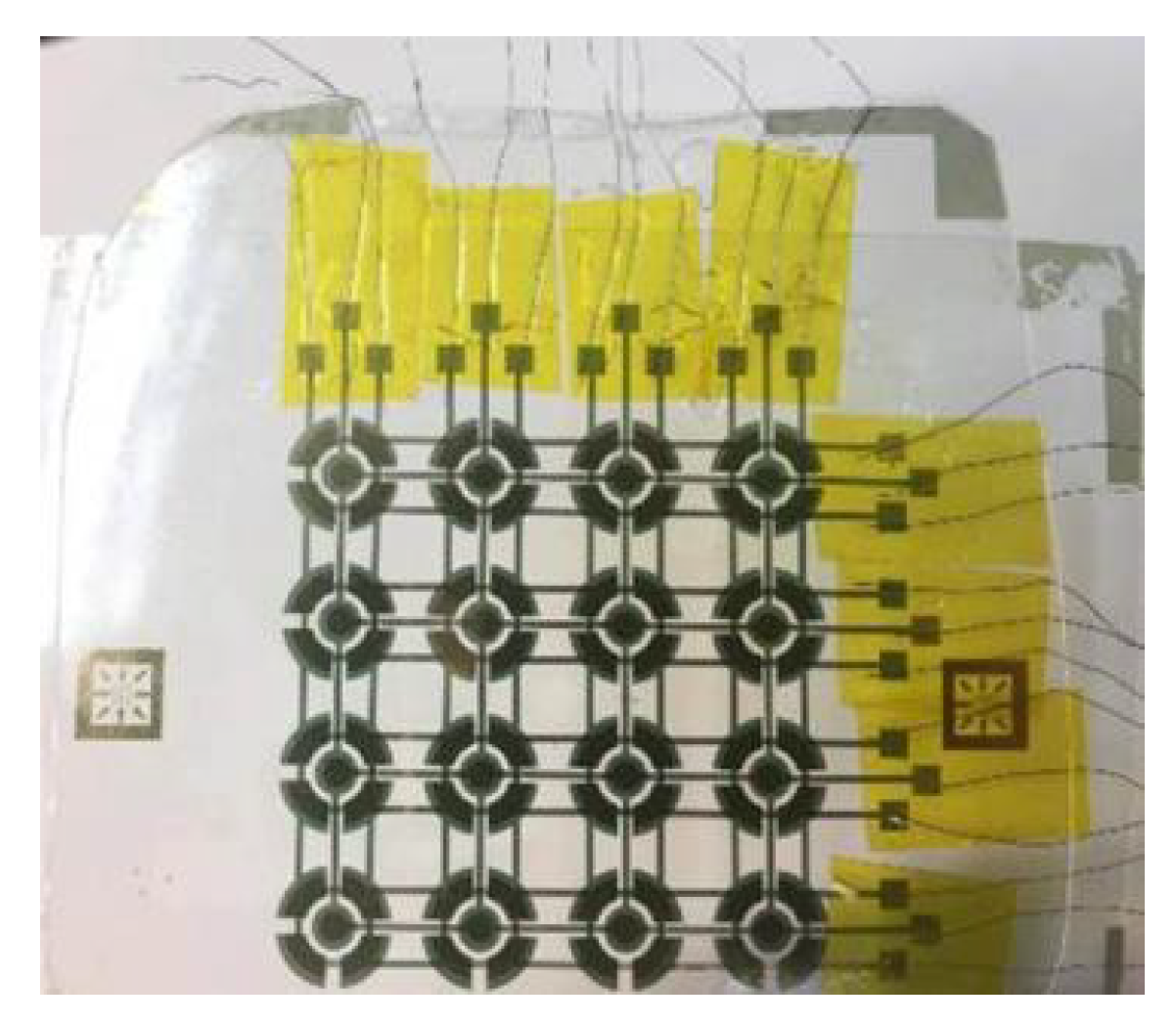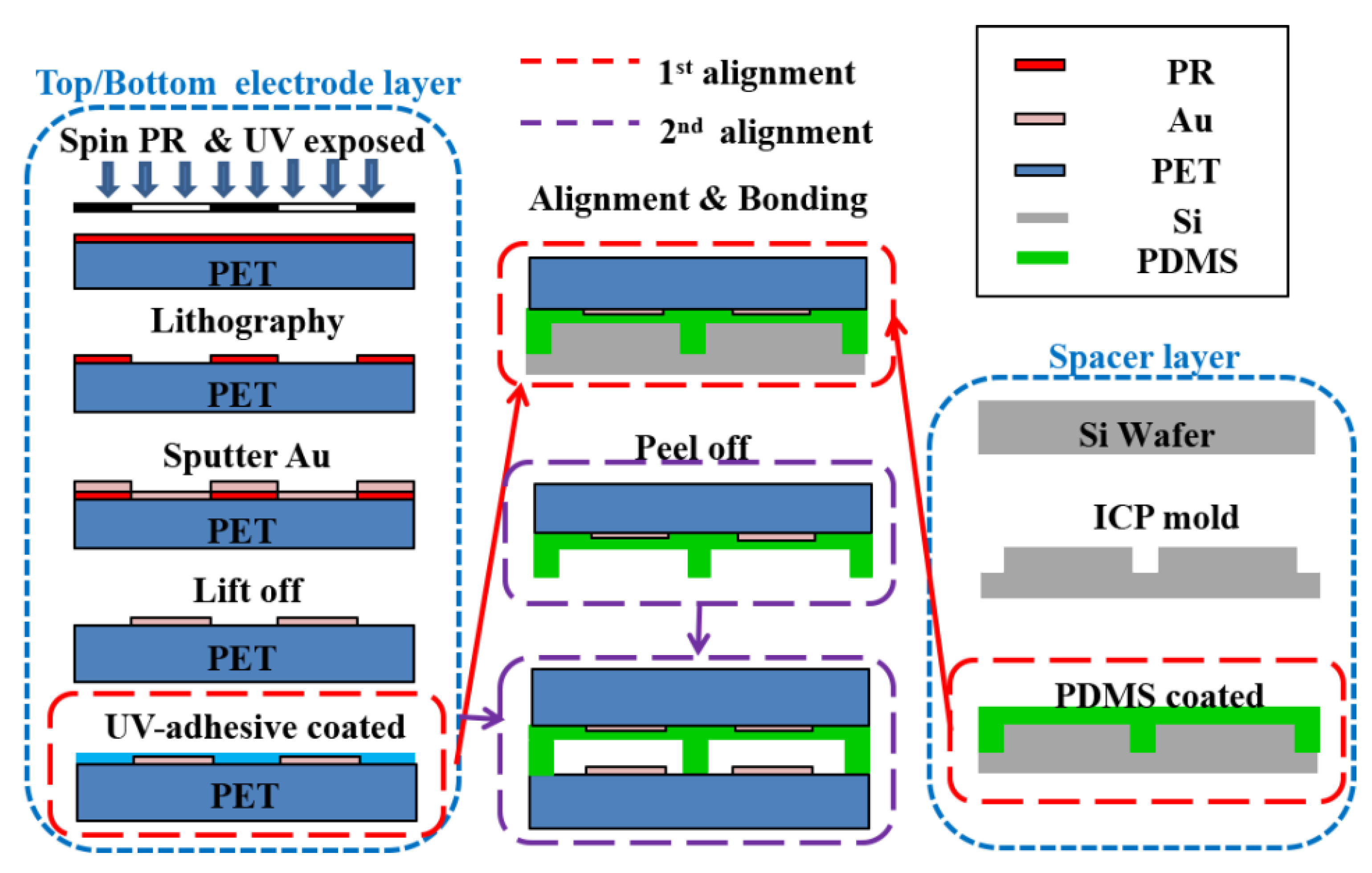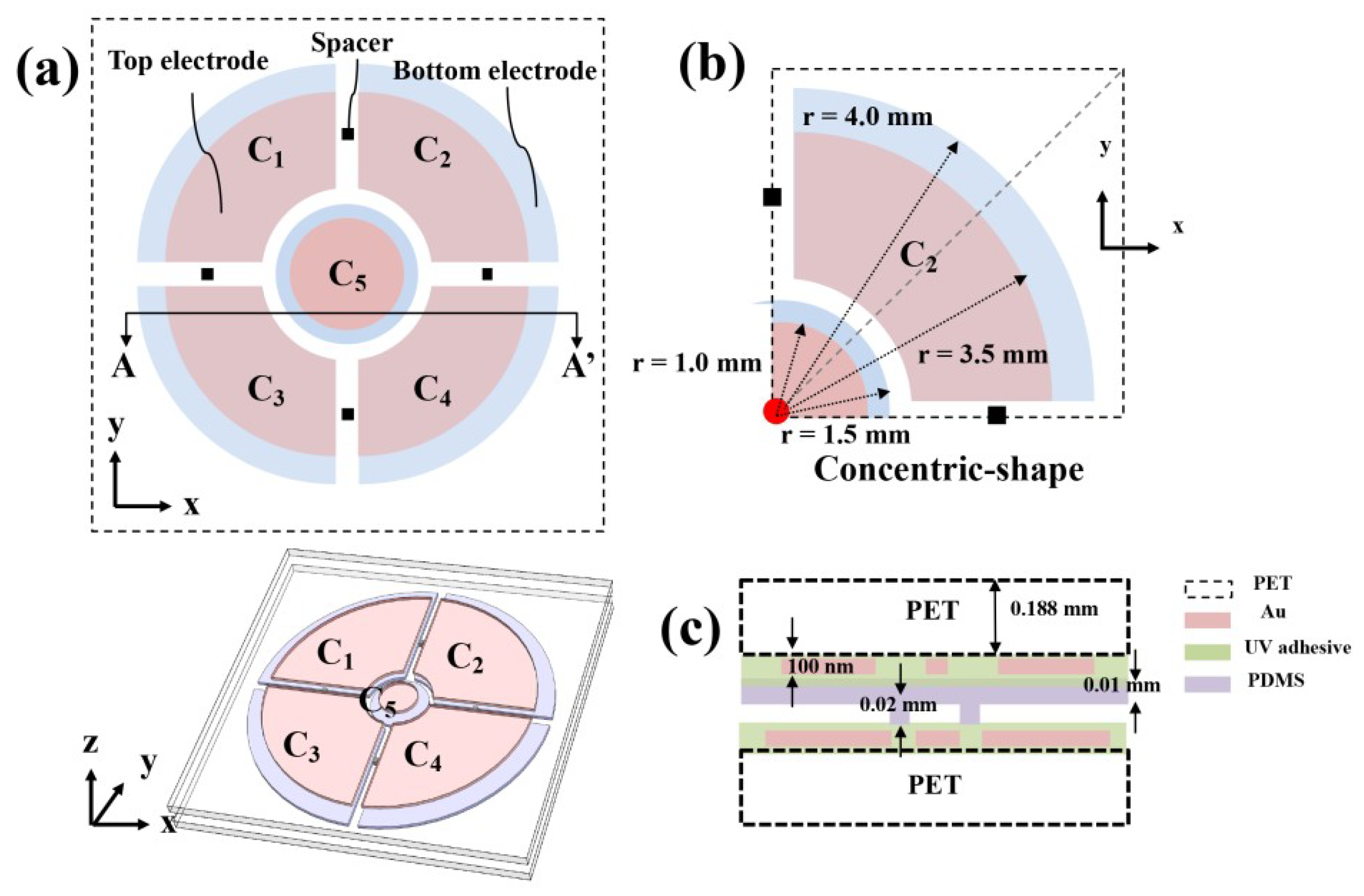Capacitive Tactile Sensor with Concentric-Shape Electrodes for Three-Axial Force Measurement †
Abstract
:1. Introduction
2. Fabrication
3. Design Concept of Concentric-Shape Electrode
4. Measurements and Results
5. Conclusions
References
- Chuang, S.; Chandra, M.; Chen, R.; Lo, C. Capacitive tactile sensor with asymmetric electrodes for angle- detection-error alleviation. Sens. Actuators A Phys. 2016, 250, 159–169. [Google Scholar] [CrossRef]
- Chandra, M.; Ke, S.; Chen, R.; Lo, C. Vertically stacked capacitive tactile sensor with more than quadrupled spatial resolution enhancement from planar arrangement. Sens. Actuators A Phys. 2017, 263, 386–390. [Google Scholar] [CrossRef]
- Chung, Y.; Chuang, S.; Chen, Y.; Lo, C.; Chen, R. Capacitive tactile sensor for angle detection and its accuracy study. IEEE Sens. J. 2016, 16, 6857–6865. [Google Scholar] [CrossRef]






Publisher’s Note: MDPI stays neutral with regard to jurisdictional claims in published maps and institutional affiliations. |
© 2018 by the authors. Licensee MDPI, Basel, Switzerland. This article is an open access article distributed under the terms and conditions of the Creative Commons Attribution (CC BY) license (https://creativecommons.org/licenses/by/4.0/).
Share and Cite
Suen, M.-S.; Chen, R. Capacitive Tactile Sensor with Concentric-Shape Electrodes for Three-Axial Force Measurement. Proceedings 2018, 2, 708. https://doi.org/10.3390/proceedings2130708
Suen M-S, Chen R. Capacitive Tactile Sensor with Concentric-Shape Electrodes for Three-Axial Force Measurement. Proceedings. 2018; 2(13):708. https://doi.org/10.3390/proceedings2130708
Chicago/Turabian StyleSuen, Min-Sheng, and Rongshun Chen. 2018. "Capacitive Tactile Sensor with Concentric-Shape Electrodes for Three-Axial Force Measurement" Proceedings 2, no. 13: 708. https://doi.org/10.3390/proceedings2130708
APA StyleSuen, M.-S., & Chen, R. (2018). Capacitive Tactile Sensor with Concentric-Shape Electrodes for Three-Axial Force Measurement. Proceedings, 2(13), 708. https://doi.org/10.3390/proceedings2130708



